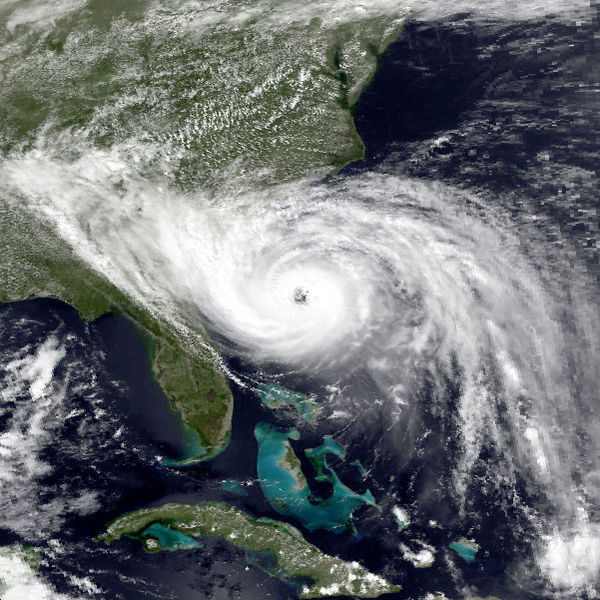1989’s Hurricane Hugo
On September 10, 1989, a tropical depression formed in the far eastern Atlantic near the Cape Verde Islands. For the next two weeks, it would hold a center place on the weather stage, becoming the worst hurricane since 1969’s Hurricane Camille and wreaking havoc in the Antilles and South Carolina.
It received a name the following day and became Hugo. Two days later, it was promoted to hurricane while located a little more than one thousand miles east of the Leeward Islands. It became a category five hurricane on the 15th with a central pressure of 918 millibars and top winds of 165 mph. It passed near Guadeloupe early on the 17th, with top winds of 145 mph and a pressure of 941 millibars as it crossed into the Caribbean. The hurricane began turning to the northwest and passed over the Virgin Islands and the eastern tip of Puerto Rico early on the 18th. Damage was severe in the Virgin Islands. Hugo was moving north northwest toward a weakness in the pressure pattern. But as the weakness filled, the storm began moving more northwest toward the Southeast coast of the U.S.
Early on the 21st, a hurricane warning was for portions of the Northeast Florida, Georgia and Carolina coasts. Hugo was centered some 390 miles southeast of Savannah, moving northwest at 17 mph. Some increase in forward speed was anticipated with the center reaching the coast late that night. Top winds were 110 mph, making it a high end category two hurricane. Advisories indicated that little further strengthening was expected. Hugo would fool them.
South Carolina declared an emergency and mandatory evacuations went into effect. 216,000 people would flee in advance of Hugo. The outer rain bands began to cross the coast and winds picked up during the afternoon. But the big story was that Hugo had grown into a 135 mph category four monster of a storm. Reconnaissance reported that the central pressure fell all day long. The planes reported that the eye was an enormous 40 miles in diameter. A NOAA WP-3D Hurricane Hunter flight narrowly escaped disaster when one engine caught fire and the crew lost control of the plane in a severe updraft. The pilot was able to finally pull the aircraft out of a dive just 700 feet above the ocean surface!
Landfall came at 11 p.m. EDT on Sullivan’s Island near Charleston. A massive twenty foot storm surge devastated the coast north of Charleston. At Mechanicsville, a near disaster occurred when the surge inundated Lincoln High School, a designated shelter that was packed with evacuees. Officials believed the school was at an elevation eleven feet higher than it really was! People had to climb into the rafters to escape the rising waters, but fortunately no one drowned in the school.
A total of 26 fatalities occurred in the U.S., with another 23 in the Caribbean. Hugo caused $10 billion damage, making it the most expensive hurricane in U.S. history up to that point.
Category: Met 101/Weather History



















